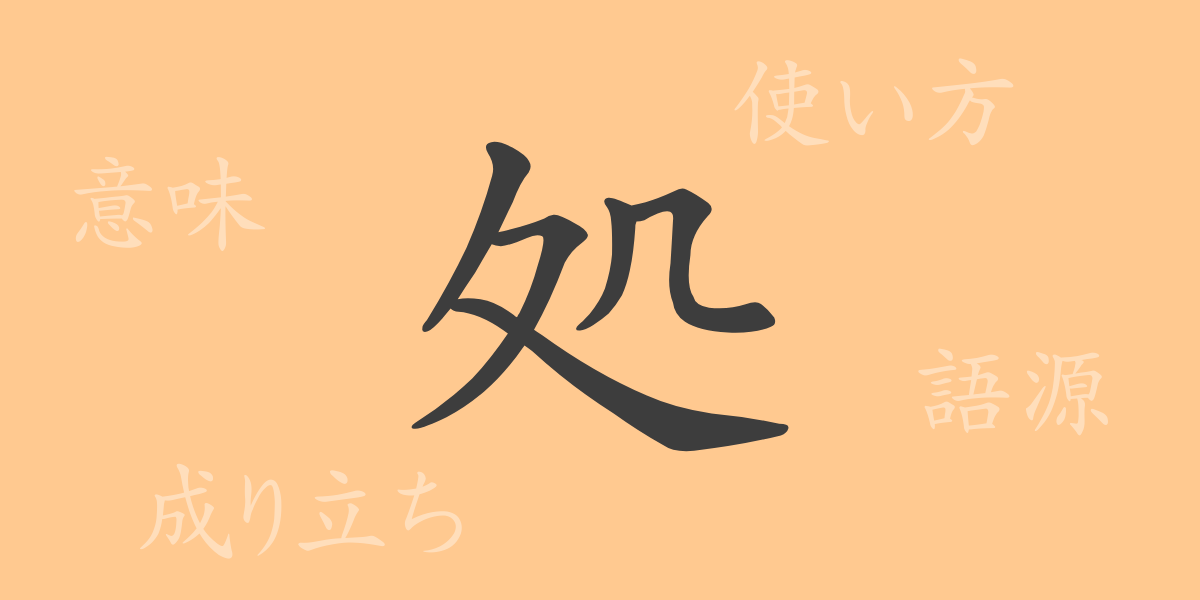The depth and diversity of meaning within a single kanji character is one of the captivating aspects of the Japanese language. “処(しょ, sho)” is one such common kanji, frequently used in various contexts of daily life. In this article, we will explore the origin, meaning, usage, pronunciation, and related idiomatic expressions of “処(しょ, sho),” delving into its rich expressive world.
処の成り立ち(語源)
The character “処(しょ, sho)” originated in ancient China and was used in practical records. As an ideogram, it combines “止(し, shi)” representing a foot, and “几(き, ki)” representing the act of cutting with an axe. This combination symbolized dealing with something in a specific place, leading to its meanings related to location and handling.
処の意味と用法
“処(しょ, sho)” can mean “place,” but it also has meanings related to actions such as “to handle” or “to dispose of,” and concepts like “treatment” as in “処遇(しょぐう, shoguu).” It is also used to indicate a person’s status or condition, as seen in the term “未処女(みしょじょ, mishojo)” referring to an unmarried woman.
処の読み方・画数・部首
The kanji “処(しょ, sho)” has various readings in Japanese.
- 読み方: 音読みでは「ショ(しょ, sho)」、訓読みでは「ところ(ところ, tokoro)」「お.る(おる, o.ru)」と読みます。
- 画数: 「処(しょ, sho)」の画数は5画です。
- 部首: 部首は「几(き, ki)」(つくえ)です。
処を使った熟語・慣用句・ことわざとその意味
There are numerous idiomatic expressions and proverbs that include “処(しょ, sho).” For example, “処世術(しょせいじゅつ, shoseijutsu)” means the art or wisdom of living skillfully in the world, and “四面楚歌(しめんそか, shimenso-ka)” describes a situation where one is surrounded by enemies on all sides, isolated and unsupported. “自楚(じしょ, jisho)” means being strict with oneself and lenient with others, and “処女航海(しょじょこうかい, shojokoukai)” refers to experiencing something for the first time.
処についてのまとめ
This article has illuminated the complex and rich meanings of the kanji “処(しょ, sho),” and how its related idioms and expressions play significant roles in Japanese. Understanding the history and culture embedded in each word is the first step toward appreciating the depth of the language. By considering how to use “処(しょ, sho)” in daily communication, you can achieve more nuanced and richer expressions.

























